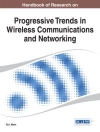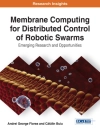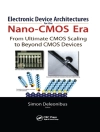This book provides a comprehensive overview of the latest research and standardization progress towards the 5th generation (5G) of mobile communications technology and beyond. It covers a wide range of topics from 5G use cases and their requirements, to spectrum, 5G end-to-end (E2E) system architecture including core network (CN), transport network (TN) and radio access network (RAN) architecture, network slicing, security and network management. It further dives into the detailed functional design and the evaluation of different 5G concepts, and provides details on planned trials and pre-commercial deployments across the globe. While the book naturally captures the latest agreements in 3rd Generation Partnership Project (3GPP) New Radio (NR) Release 15, it goes significantly beyond this by describing the likely developments towards the final 5G system that will ultimately utilize a wide range of spectrum bands, address all envisioned 5G use cases, and meet or exceed the International Mobile Telecommunications (IMT) requirements for the year 2020 and beyond (IMT-2020).
5G System Design: Architectural and Functional Considerations and Long Term Research is based on the knowledge and consensus from 158 leading researchers and standardization experts from 54 companies or institutes around the globe, representing key mobile network operators, network vendors, academic institutions and regional bodies for 5G. Different from earlier books on 5G, it does not focus on single 5G technology components, but describes the full 5G system design from E2E architecture to detailed functional design, including details on 5G performance, implementation and roll-out.
表中的内容
Contributor List xvii
Foreword 1 xxiii
Foreword 2 xxv
Acknowledgments xxvii
List of Abbreviations xxix
Part 1 Introduction and Basics 1
1 Introduction and Motivation 3
Patrick Marsch, Ömer Bulakçı, Olav Queseth and Mauro Boldi
1.1 5 th Generation Mobile and Wireless Communications 3
1.2 Timing of this Book and Global 5G Developments 5
1.3 Scope of the 5G System Described in this Book 8
1.4 Approach and Structure of this Book 10
References 12
2 Use Cases, Scenarios, and their Impact on the Mobile Network Ecosystem 15
Salah Eddine Elayoubi, Michał Maternia, Jose F. Monserrat, Frederic Pujol, Panagiotis Spapis, Valerio Frascolla and Davide Sorbara
2.1 Introduction 15
2.2 Main Service Types Considered for 5G 16
2.3 5G Service Requirements 17
2.4 Use Cases Considered in NGMN and 5G PPP Projects 18
2.4.1 NGMN use Case Groups 20
2.4.2 Use Case Groups from 5G PPP Phase 1 Projects 23
2.4.3 Mapping of the 5G‐PPP Use Case Families to the Vertical Use Cases 23
2.5 Typical Use Cases Considered in this Book 25
2.5.1 Dense Urban Information Society 25
2.5.2 Smart City 26
2.5.3 Connected Cars 26
2.5.4 Industry Automation 27
2.5.5 Broadcast/Multicast Communications 27
2.6 Envisioned Mobile Network Ecosystem Evolution 28
2.6.1 Current Mobile Network Ecosystem 28
2.6.2 Identification of New Players and their Roles in 5G 28
2.6.3 Evolution of the MNO‐Centric Value Net 31
2.7 Summary and Outlook 33
References 34
3 Spectrum Usage and Management 35
Thomas Rosowski, Rauno Ruismaki, Luis M. Campoy, Giovanna D’Aria, Du Ho Kang and Adrian Kliks
3.1 Introduction 35
3.2 Spectrum Authorization and Usage Scenarios 36
3.2.1 Spectrum Authorization and Usage Options for 5G 36
3.2.2 Requirements for Different 5G Usage Scenarios 38
3.3 Spectrum Bandwidth Demand Determination 39
3.3.1 Main Parameters for Spectrum Bandwidth Demand Estimations 39
3.3.2 State of the Art of Spectrum Demand Analysis 40
3.3.3 Spectrum Demand Analysis on Localized Scenarios 40
3.4 Frequency Bands for 5G 41
3.4.1 Bands Identified for IMT and Under Study in ITU‐R 41
3.4.2 Further Potential Frequency Bands 43
3.4.3 5G Roadmaps 44
3.5 Spectrum Usage Aspects at High Frequencies 44
3.5.1 Propagation Challenges 45
3.5.2 Beamforming and 5G Mobile Coverage 45
3.5.3 Analysis of Deployment Scenarios 46
3.5.4 Coexistence of 5G Systems and Fixed Service Links 47
3.5.5 Coexistence under License‐exempt Operation 48
3.6 Spectrum Management 49
3.6.1 Evolutions in Dynamic Spectrum Management 49
3.6.2 Functional Spectrum Management Architecture 51
3.7 Summary and Outlook 53
References 54
4 Channel Modeling 57
Shangbin Wu, Sinh L. H. Nguyen and Raffaele D’Errico
4.1 Introduction 57
4.2 Core Features of New Channel Models 59
4.2.1 Path Loss 59
4.2.2 LOS Probability 61
4.2.3 O2I Penetration Loss 63
4.2.4 Fast Fading Generation 65
4.3 Additional Features of New Channel Models 65
4.3.1 Large Bandwidths and Large Antenna Arrays 65
4.3.2 Spatial Consistency 67
4.3.3 Blockage 68
4.3.4 Correlation Modeling for Multi‐Frequency Simulations 69
4.3.5 Ground Reflection 70
4.3.6 Diffuse Scattering 72
4.3.7 D2D, Mobility, and V2V Channels 72
4.3.8 Oxygen Absorption, Time‐varying Doppler Shift, Multi‐Frequency Simulations, and UE Rotation 73
4.3.9 Map‐based Hybrid Modeling Approach 74
4.4 Summary and Outlook 74
References 75
Part 2 5G System Architecture and E2E Enablers 79
5 E2E Architecture 81
Marco Gramaglia, Alexandros Kaloxylos, Panagiotis Spapis, Xavier Costa, Luis Miguel Contreras, Riccardo Trivisonno, Gerd Zimmermann, Antonio de la Oliva, Peter Rost and Patrick Marsch
5.1 Introduction 81
5.2 Enablers and Design Principles 82
5.2.1 Modularization 82
5.2.2 Network Slicing 82
5.2.3 Network Softwarization 84
5.2.4 Multi‐Tenancy 85
5.2.5 Mobile or Multi‐Access Edge Computing 87
5.3 E2E Architecture Overview 88
5.3.1 Physical Network Architecture 88
5.3.2 CN/RAN Split 90
5.3.3 Qo S Architecture 91
5.3.4 Spectrum Sharing Architecture Overview 93
5.3.5 Transport Network 93
5.3.6 Control and Orchestration 95
5.4 Novel Concepts and Architectural Extensions 97
5.4.1 Architecture Modularization for the Core Network 97
5.4.2 RRC States 99
5.4.3 Access‐agnostic 5G Core Network 100
5.4.4 Roaming Support 101
5.4.5 Softwarized Network Control 102
5.4.6 Control/User Plane Split 103
5.5 Internetworking, Migration and Network Evolution 104
5.5.1 Interworking with Earlier 3GPP RATs 105
5.5.2 Interworking with Non‐3GPP Access Networks 107
5.5.3 Network Evolution 111
5.6 Summary and Outlook 112
References 112
6 RAN Architecture 115
Patrick Marsch, Navid Nikaein, Mark Doll, Tao Chen and Emmanouil Pateromichelakis
6.1 Introduction 115
6.2 Related Work 116
6.2.1 3gpp 116
6.2.2 5g Ppp 117
6.3 RAN Architecture Requirements 118
6.4 Protocol Stack Architecture and Network Functions 119
6.4.1 Network Functions in a Multi‐AIV and Multi‐Service Context 119
6.4.2 Possible Changes in the 5G Protocol Stack Compared to 4G 121
6.4.3 Possible Service‐specific Protocol Stack Optimization in 5G 124
6.4.4 NF Instantiation for Multi‐Service and Multi‐Tenancy Support 127
6.5 Multi‐Connectivity 129
6.5.1 5G/(e)LTE Multi‐Connectivity 129
6.5.2 5G/5G Multi‐Connectivity 130
6.5.3 5G/Wi‐Fi Multi‐Connectivity 132
6.6 RAN Function Splits and Resulting Logical Network Entities 133
6.6.1 Control Plane/User Plane Split (Vertical Split) 134
6.6.2 Split into Centralized and Decentralized Units (Horizontal Split) 135
6.6.3 Most Relevant Overall Split Constellations 138
6.7 Deployment Scenarios and Related Physical RAN Architectures 141
6.7.1 Possible Physical Architectures Supporting the Deployment Scenarios 142
6.7.2 5G/(e)LTE and 5G Multi‐AIV Co‐Deployment 143
6.8 RAN Programmability and Control 144
6.9 Summary and Outlook 147
References 148
7 Transport Network Architecture 151
Anna Tzanakaki, Markos Anastasopoulos, Nathan Gomes, Philippos Assimakopoulos, Josep M. Fàbrega, Michela Svaluto Moreolo, Laia Nadal, Jesús Gutiérrez, Vladica Sark, Eckhard Grass, Daniel Camps‐Mur, Antonio de la Oliva, Nuria Molner, Xavier Costa Perez, Josep Mangues, Ali Yaver, Paris Flegkas, Nikos Makris, Thanasis Korakis and Dimitra Simeonidou
7.1 Introduction 151
7.2 Architecture Definition 153
7.2.1 User Plane 153
7.2.2 Control Plane 155
7.3 Technology Options and Protocols 158
7.3.1 Wireless Technologies 158
7.3.2 Optical Transport 161
7.3.3 Ethernet 165
7.4 Self‐Backhauling 165
7.4.1 Comparison with Legacy LTE Relaying 166
7.4.2 Technical Aspects of Self‐Backhauling 167
7.5 Technology Integration and Interfacing 168
7.5.1 Framing, Protocol Adaptation, Flow Identification and Control 168
7.5.2 PBB/MPLS Framing to Carry FH/BH and its Multi‐Tenancy Characteristic 169
7.6 Transport Network Optimization and Performance Evaluation 170
7.6.1 Evaluation of Joint FH and BH Transport 170
7.6.2 Experimental Evaluation of Layer‐2 Functional Splits 173
7.6.3 Monitoring in the Ethernet Fronthaul 174
7.7 Summary 178
References 178
8 Network Slicing 181
Alexandros Kaloxylos, Christian Mannweiler, Gerd Zimmermann, Marco Di Girolamo, Patrick Marsch, Jakob Belschner, Anna Tzanakaki, Riccardo Trivisonno, Ömer Bulakçı, Panagiotis Spapis, Peter Rost, Paul Arnold and Navid Nikaein
8.1 Introduction 181
8.2 Slice Realization in the Different Network Domains 183
8.2.1 Realization of Slicing in the Core Network 183
8.2.2 Slice Support on the Transport Network 186
8.2.3 Impact of Slicing on the Radio Access Network 187
8.2.4 Slice Support Across Different Administrative Domains 191
8.2.5 E2E Slicing: A Detailed Example 193
8.3 Operational Aspects 196
8.3.1 Slice Selection 196
8.3.2 Connecting to Multiple Slices 197
8.3.3 Slice Isolation 197
8.3.4 Radio Resource Management Among Slices 198
8.3.5 Managing Network Slices 199
8.4 Summary and Outlook 202
References 204
9 Security 207
Carolina Canales‐Valenzuela, Madalina Baltatu, Luciana Costa, Kai Habel, Volker Jungnickel, Geza Koczian, Felix Ngobigha, Michael C. Parker, Muhammad Shuaib Siddiqui, Eleni Trouva and Stuart D. Walker
9.1 Introduction 207
9.2 Threat Landscape 208
9.3 5G Security Requirements 209
9.3.1 Adoption of Software‐defined Networking and Virtualization Technologies 209
9.3.2 Security Automation and Management 210
9.3.3 Slice Isolation and Protection Against Side Channel Attacks in Multi‐Tenant Environments 211
9.3.4 Monitoring and Analytics for Security Purposes 211
9.4 5G Security Architecture 211
9.4.1 Overall Description 211
9.4.2 Infrastructure Security 213
9.4.3 Physical Layer Security 216
9.4.4 5G RAN Security 217
9.4.5 Service‐level Security 221
9.4.6 A Control and Management Framework for Automated Security 221
9.5 Summary 224
References 224
10 Network Management and Orchestration 227
Luis M. Contreras, Víctor López, Ricard Vilalta, Ramon Casellas, Raúl Muñoz, Wei Jiang, Hans Schotten, Jose Alcaraz‐Calero, Qi Wang, Balázs Sonkoly and László Toka
10.1 Introduction 227
10.2 Network Management and Orchestration Through SDN and NFV 228
10.2.1 Software-Defined Networking 229
10.2.2 Network Function Virtualization 232
10.3 Enablers of Management and Orchestration 233
10.3.1 Open and Standardized Interfaces 234
10.3.2 Modeling of Services and Devices 237
10.4 Orchestration in Multi‐Domain and Multi‐Technology Scenarios 238
10.4.1 Multi‐Domain Scenarios 238
10.4.2 Multi‐Technology Scenarios 244
10.5 Software‐Defined Networking for 5G 245
10.5.1 Xhaul Software‐Defined Networking 245
10.5.2 Core Transport Networks 250
10.6 Network Function Virtualization in 5G Environments 251
10.7 Autonomic Network Management in 5G 252
10.7.1 Motivation 252
10.7.2 Architecture of Autonomic Management 254
10.7.3 Autonomic Control Loop 255
10.7.4 Enabling Algorithms 257
10.8 Summary 258
References 259
Part 3 5G Functional Design 263
11 Antenna, PHY and MAC Design 265
Frank Schaich, Catherine Douillard, Charbel Abdel Nour, Malte Schellmann, Tommy Svensson, Hao Lin, Honglei Miao, Hua Wang, Jian Luo, Milos Tesanovic, Nuno Pratas, Sandra Roger and Thorsten Wild
11.1 Introduction 265
11.2 PHY and MAC Design Criteria and Harmonization 267
11.3 Waveform Design 269
11.3.1 Advanced Features and Design Aspects of Multi‐Carrier Waveforms 272
11.3.2 Comparison of Waveform Candidates for 5G 276
11.3.3 Co‐existence Aspects 280
11.3.4 General Framework for Multi‐Carrier Waveform Generation 281
11.4 Coding Approaches and HARQ 283
11.4.1 Coding Requirements 283
11.4.2 Coding Candidates 284
11.4.3 General Summary and Comparison 289
11.4.4 Hybrid Automatic Repeat re Quest (HARQ) 291
11.5 Antenna Design, Analog, Digital and Hybrid Beamforming 293
11.5.1 Multi‐Antenna Scheme Overview of 3GPP NR 294
11.5.2 Hybrid Beamforming 297
11.5.3 Digital Beamforming with Finite DACs 298
11.5.4 Massive Multiple‐Input Massive Multiple‐Output 298
11.6 PHY/MAC Design for Multi‐Service Support 300
11.6.1 Fundamental Frame Design Considerations 300
11.6.2 Initial Access 302
11.6.3 Control Channel Design 303
11.6.4 Data Channel Design 304
11.7 Summary and Outlook 310
References 311
12 Traffic Steering and Resource Management 315
Ömer Bulakçı, Klaus Pedersen, David Gutierrez Estevez, Athul Prasad, Fernando Sanchez Moya, Jan Christoffersson, Yang Yang, Emmanouil Pateromichelakis, Paul Arnold, Tommy Svensson, Tao Chen, Honglei Miao, Martin Kurras, Samer Bazzi, Stavroula Vassaki, Evangelos Kosmatos, Kwang Taik Kim, Giorgio Calochira, Jakob Belschner, Sergio Barberis and Taylan Şahin
12.1 Motivation and Role of Resource Management in 5G 315
12.2 Service Classification: A First Step Towards Efficient RM 317
12.2.1 Qo S Mechanisms in 5G Networks 317
12.2.2 A Survey of Traffic Classification Mechanisms 318
12.2.3 ML‐based Service Classification Approach 319
12.2.4 Numerical Evaluation of Service Classification Schemes 320
12.3 Dynamic Multi‐Service Scheduling 321
12.3.1 Scheduling Formats and Flexible Timing 323
12.3.2 Benefits of Scheduling with Variable TTI Size 324
12.3.3 Punctured/Preemptive Scheduling 326
12.4 Fast‐Timescale Dynamic Traffic Steering 328
12.4.1 Fast Traffic Steering 328
12.4.2 Proactive Traffic Steering in Heterogeneous Networks with mm Wave Bands 330
12.4.3 Multi‐Node Connectivity 332
12.5 Network‐based Interference Management 335
12.5.1 Interference Mitigation in Dynamic Radio Topology 336
12.5.2 Interference Management Based on Advanced Transceiver Designs 340
12.5.3 Interference Mitigation in Massive MIMO Dynamic TDD Systems 342
12.5.4 Multi‐Cell Pilot Coordination for UL Pilot Interference Mitigation 345
12.5.5 Interference Mitigation in mm Wave Deployments 347
12.6 Multi‐Slice RM 350
12.7 Energy‐efficient RAN Moderation 354
12.7.1 Coordinated Sleep Cycles for Energy Efficiency 354
12.7.2 Cell On/Off Coordination 356
12.8 UE Context Management 359
12.9 Summary and Outlook 360
References 361
13 Initial Access, RRC and Mobility 367
Mårten Ericson, Panagiotis Spapis, Mikko Säily, Klaus Pedersen, Yinan Qi, Nicolas Barati, Tommy Svensson, Mehrdad Shariat, Marco Giordani, Marco Mezzavilla, Mark Doll, Honglei Miao and Chan Zhou
13.1 Introduction 367
13.2 Initial Access 369
13.2.1 Initial Access in General 369
13.2.2 System Information and 5G RAN Lean Design 370
13.2.3 Configurable Downlink Synchronization for Unified Beam Operation 372
13.2.4 Digital Beamforming in the Initial Access Phase 374
13.2.5 Beam Finding for Low-Latency Initial Access 376
13.2.6 Optimized RACH Access Schemes 378
13.3 States and State Handling 381
13.3.1 Fundamentals of the RRC State Machine for 5G 381
13.3.2 Mobility Procedures for Connected Inactive 383
13.3.3 Configurability of the Connected Inactive State 385
13.3.4 Paging in Connected Inactive 387
13.3.5 Small Data Transmission in RRC Connected State 390
13.4 Mobility 391
13.4.1 Introduction 391
13.4.2 Mobility Management via UL‐based Measurements 391
13.4.3 Cluster-based Beam Mobility Framework 394
13.4.4 Partly UE‐autonomous Cell Management for Multi‐Connectivity Cases 397
13.4.5 Enhanced Synchronous Handover without Random Access 398
13.4.6 RAN Design to Support CSI Acquisition for High‐Mobility Users 401
13.5 Summary and Outlook 404
References 404
14 D2D and V2X Communications 409
Shubhranshu Singh, Ji Lianghai, Daniel Calabuig, David Garcia‐Roger, Nurul H. Mahmood, Nuno Pratas, Tomasz Mach and Maria Carmela De Gennaro
14.1 Introduction 409
14.1.1 Application Scenarios 410
14.1.2 Technical Challenges from 5G Design Perspective 411
14.2 Technical Status and Standardization Overview 412
14.2.1 D2D: 3GPP Standardization Overview 412
14.2.2 V2X: 3GPP Standardization Overview 413
14.2.3 ETSI ITS Communications Architecture and Protocol Stack 413
14.2.4 IEEE Wireless Access in Vehicular Environments – WAVE 416
14.2.5 Other Industry Organizations 417
14.3 5G Air Interface Candidate Waveforms for Sidelink Support 418
14.3.1 Synchronization Problems and Possible Solutions 418
14.3.2 Enhancements for V2X 421
14.4 Device Discovery on the Sidelink 424
14.4.1 Proximity Discovery Architecture 424
14.4.2 Network‐supported Proximity Discovery 424
14.4.3 Out‐of‐Coverage Proximity Discovery 425
14.4.4 Performance Evaluation of Device Discovery with Full‐Duplex Nodes 426
14.5 Sidelink Mobility Management 427
14.5.1 General Considerations 427
14.5.2 D2D Mobility Management Schemes 429
14.6 V2X Communications for Road Safety Applications 430
14.6.1 General System Design Aspects 430
14.6.2 Impact of the Existence of Several Message Ranges on the System Design 432
14.6.3 Distributed versus Centralized Radio Resource Management 434
14.7 Industrial Implementation of V2X in the Automotive Domain 434
14.7.1 Placement of the V2X Platform within the Vehicle 435
14.7.2 Test Deployments and Outcomes 436
14.8 Further Evolution of D2D Communications 438
14.8.1 Exploitation of D2D to Enhance m MTC Services 438
14.8.2 Radio Link Enabler in Reuse Mode to Improve System Capacity 440
14.8.3 Radio Resource Management for D2D 441
14.8.4 Cooperative D2D Communication 444
14.9 Summary and Outlook 445
References 446
Part 4 Performance Evaluation and Implementation 451
15 Performance, Energy Efficiency and Techno‐Economic Assessment 453
Michał Maternia, Jose F. Monserrat, David Martín‐Sacristán, Yong Wu, Changqing Yang, Mauro Boldi, Yu Bao, Frederic Pujol, Giuseppe Piro, Gennaro Boggia, Alessandro Grassi, Hans‐Otto Scheck, Ioannis‐Prodromos Belikaidis, Andreas Georgakopoulos, Katerina Demesticha and Panagiotis Demestichas
15.1 Introduction 453
15.2 Performance Evaluation Framework 454
15.2.1 IMT‐A Evaluation Framework 454
15.2.2 IMT‐2020 Evaluation Process and Framework 455
15.2.3 5G PPP Evaluation Framework 456
15.3 Network Energy Efficiency 467
15.3.1 Why is Network Energy Efficiency Important? 467
15.3.2 Energy Efficiency Metrics and Models 468
15.3.3 Energy Efficiency Metrics and Product Assessment in the Laboratory 471
15.3.4 Numeric Network Energy Efficiency Evaluation 471
15.4 Techno‐Economic Evaluation and Analysis of 5G Deployment 473
15.4.1 Economic Assessment of New Technology Deployment in Mobile Networks 474
15.4.2 Methodology of 5G Deployment Assessment 475
15.4.3 Techno‐Economic Evaluation and Deployment Analysis Results 477
15.5 Summary 478
References 479
16 Implementation of Hardware and Software Platforms 483
Chia‐Yu Chang, Dario Sabella, David García‐Roger, Dieter Ferling, Fredrik Tillman, Gian Michele Dell’Aera, Leonardo Gomes Baltar, Michael Färber, Miquel Payaró, Navid Nikaein, Pablo Serrano, Raymond Knopp, Sandra Roger, Sylvie Mayrargue and Tapio Rautio
16.1 Introduction 483
16.2 Solutions for Radio Frontend Implementation 484
16.2.1 Requirements on 5G Radio Frontends 484
16.2.2 Multi‐Band Transceivers 485
16.2.3 Multi‐Antenna Transceivers 487
16.2.4 Full‐Duplex Transceivers 490
16.2.5 Techniques for the Enhancement of Power Amplifier Efficiency 491
16.3 Solutions for Digital HW Implementation 492
16.3.1 Requirements on 5G Digital HW 492
16.3.2 Complexity Analysis of the Individual Implementation of New Waveforms 493
16.3.3 Complexity Analysis of a Multi‐Waveform Harmonized Implementation 496
16.3.4 Channel Decoder Implementations for 5G 501
16.4 Flexible HW/SW Partitioning Solutions for 5G 502
16.4.1 Architecture for Supporting MAC/PHY Cross‐Layer Reconfiguration 502
16.4.2 Cognitive Dynamic HW/SW Partitioning Algorithm 503
16.5 Implementation of SW Platforms 504
16.5.1 Functional Modules 504
16.5.2 SW Platform Solutions for Prototyping 5G Systems 505
16.6 Implementation Example: v RAN/C‐RAN Architecture in OAI 506
16.6.1 Overall Architecture 507
16.6.2 Deployment Topology 507
16.6.3 Performance Results 509
16.6.4 Deployment Environment 514
16.7 Summary 516
References 517
17 Standardization, Trials, and Early Commercialization 521
Terje Tjelta, Olav Queseth, Didier Bourse, Yves Bellego, Raffaele de Peppe, Hisham Elshaer, Frederic Pujol, Chris Pearson, Chen Xiaobei, Takehiro Nakamura, Akira Matsunaga, Hitoshi Yoshino, Yukihiko Okumura, Dong Ku Kim, Jinhyo Park and Hong Beom Jeon
17.1 Introduction 521
17.2 Standardization Roadmap 522
17.2.1 3GPP New Radio 522
17.2.2 Imt‐ 2020 524
17.2.3 3GPP e LTE 524
17.3 Early Deployments 526
17.3.1 Early Deployment in Europe 526
17.3.2 Early Deployment in Americas 531
17.3.3 Early Deployment in Asia 533
17.4 Summary 547
References 547
Index 551
关于作者
DR. PATRICK MARSCH has been heading research and R&D departments in NSN and Nokia, Poland, from 2011 to 2017, and is now Senior Project Manager, Digital Rail at Deutsche Bahn AG, Germany. Patrick has also been the technical manager of the 5G PPP METIS-II project, from which parts of this book have originated.
DR. ÖMER BULAKÇI is Senior Research Engineer, Huawei German Research Center (GRC), Munich, Germany. He has been vice-chairman of the 5G PPP Architecture Working Group, and work package leader in 5G PPP METIS-II and 5G-Mo NArch projects.
DR. OLAV QUESETH, is Master Researcher, Ericsson Research, Sweden. He has been chairman of the 5G PPP Pre-standards Working Group and the coordinator of the 5G PPP METIS-II project.
MAURO BOLDI works at Wireless Innovation, Telecom Italia, Italy. He has been the leader of dissemination and standardization in many European projects, such as 5G PPP METIS-II and 5G-Mo NArch.












